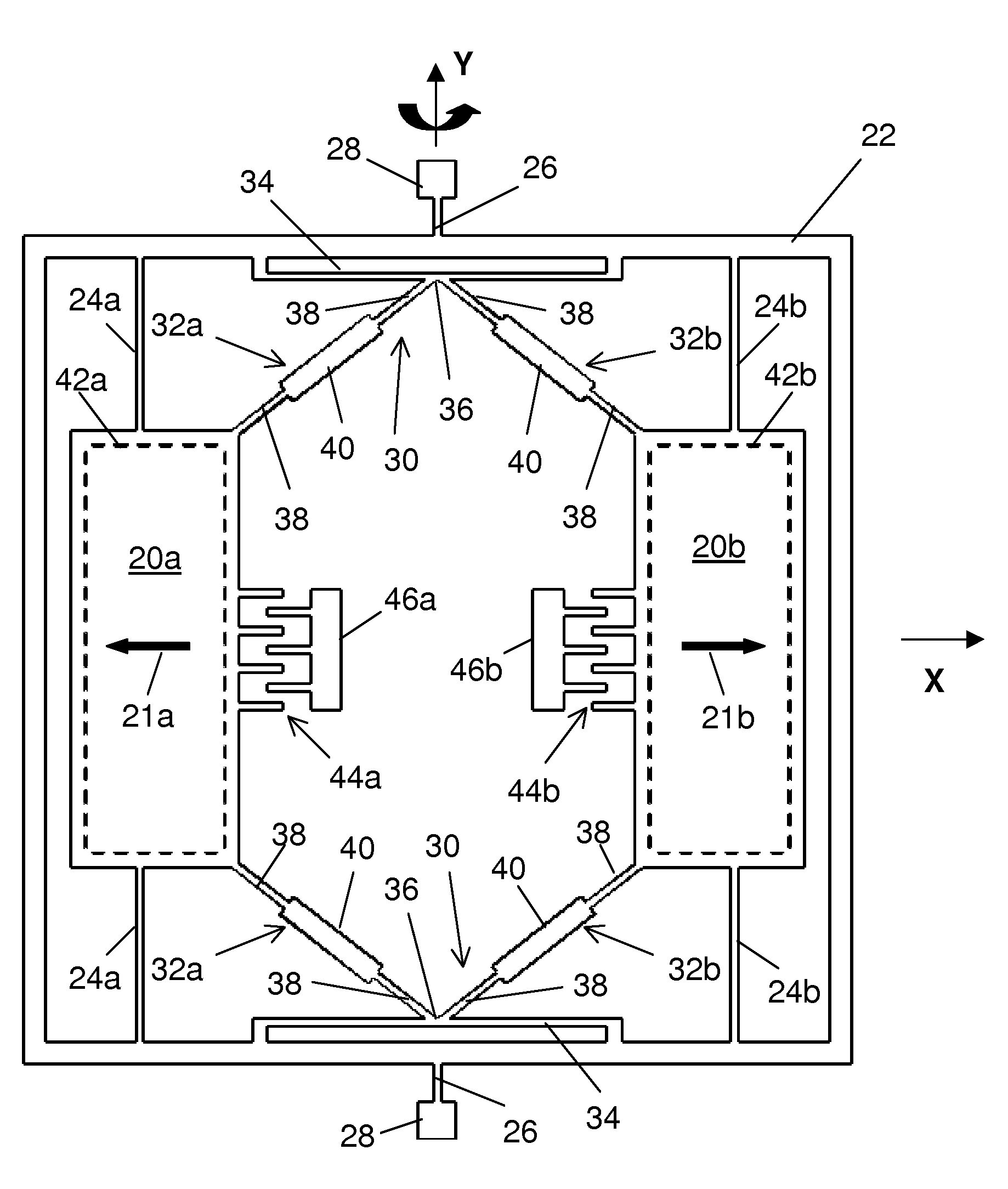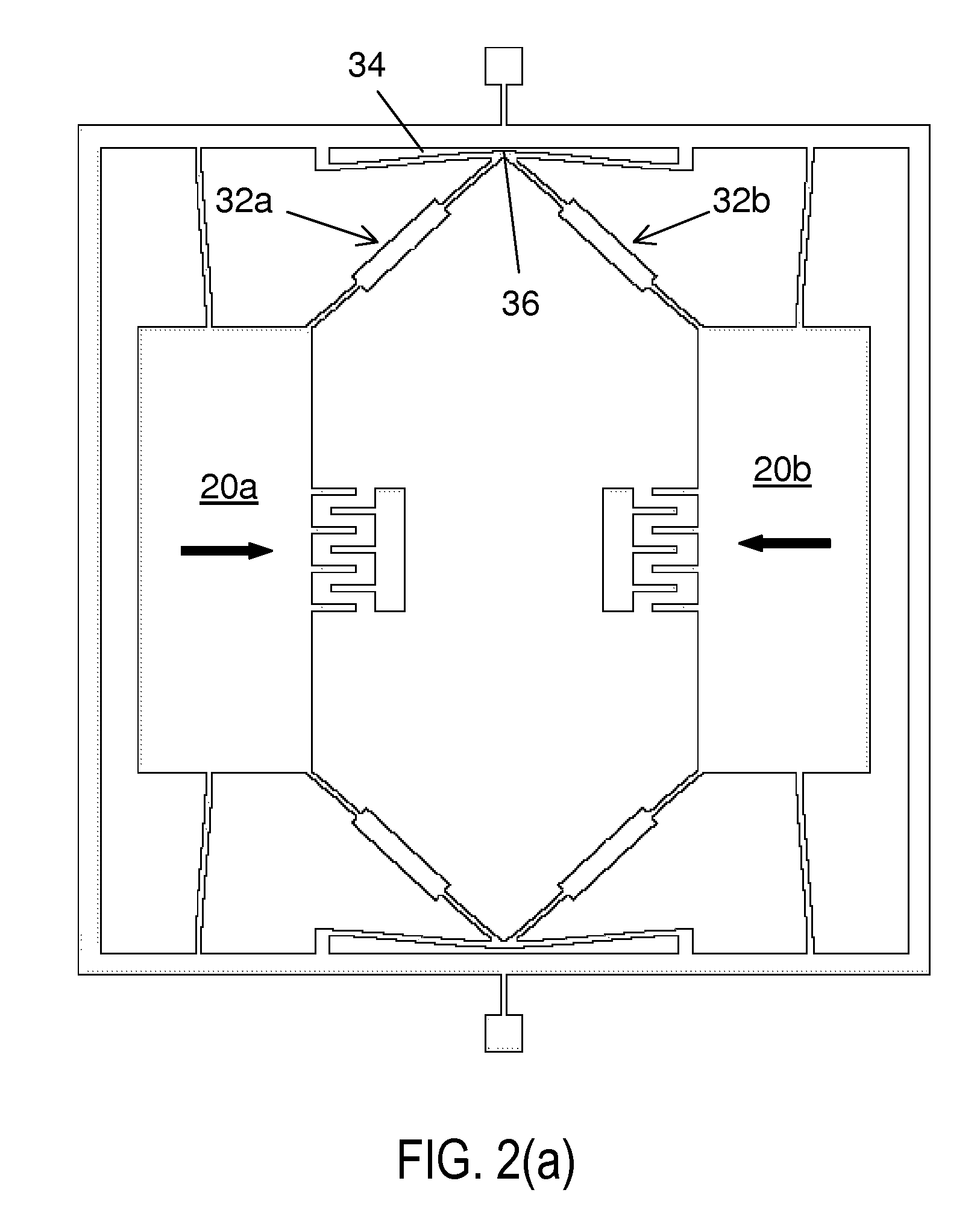Angular rate sensor with suppressed linear acceleration response
a linear acceleration and angular rate sensor technology, applied in the direction of acceleration measurement using interia force, turn-sensitive devices, instruments, etc., can solve the problems of in-phase mode cannot be well suppressed, rate sensors are susceptible to linear acceleration, and the velocity of the mass is susceptible to linear acceleration in the drive direction, so as to improve the angular rate
- Summary
- Abstract
- Description
- Claims
- Application Information
AI Technical Summary
Benefits of technology
Problems solved by technology
Method used
Image
Examples
Embodiment Construction
[0031]As illustrated in FIG. 1, the rate sensor has a pair of generally planar proof masses 20a, 20b that lie in an x, y reference plane when the device is at rest. The masses are disposed and spaced apart along the x-axis, which is the drive axis, i.e. the axis along which the masses are driven to oscillate in drive-mode. The input axis, i.e. the axis about which the angular rate of rotation is measured, is the y-axis.
[0032]The proof masses are suspended from a supporting frame, or sensing frame, 22 in the plane of the masses by flexible beams, or flexures, 24a, 24b. The flexures, which extend along the y-axis, are relatively flexible in the drive direction, but relatively stiff in other directions. These flexures constrain each one of the masses for linear movement along the x-axis.
[0033]The masses can be driven into oscillation along the drive axis by comb drives 44a, 44b, which have interdigitated comb fingers with moveable fingers attached to masses 20a, 20b and stationary fing...
PUM
 Login to View More
Login to View More Abstract
Description
Claims
Application Information
 Login to View More
Login to View More - R&D
- Intellectual Property
- Life Sciences
- Materials
- Tech Scout
- Unparalleled Data Quality
- Higher Quality Content
- 60% Fewer Hallucinations
Browse by: Latest US Patents, China's latest patents, Technical Efficacy Thesaurus, Application Domain, Technology Topic, Popular Technical Reports.
© 2025 PatSnap. All rights reserved.Legal|Privacy policy|Modern Slavery Act Transparency Statement|Sitemap|About US| Contact US: help@patsnap.com



